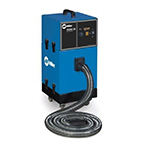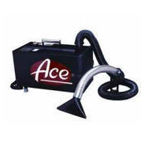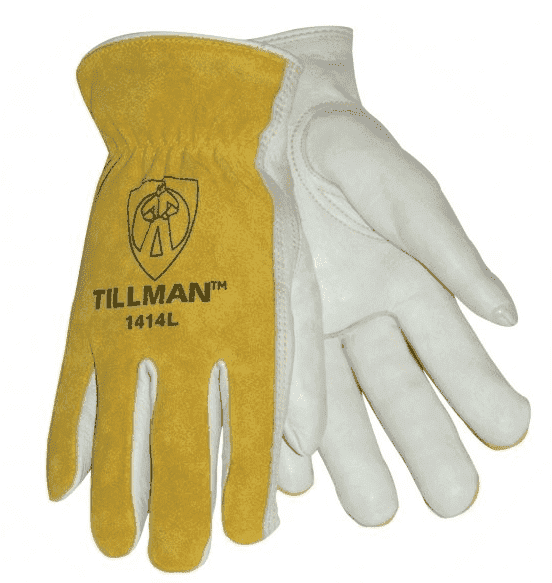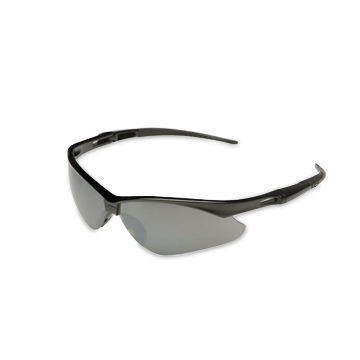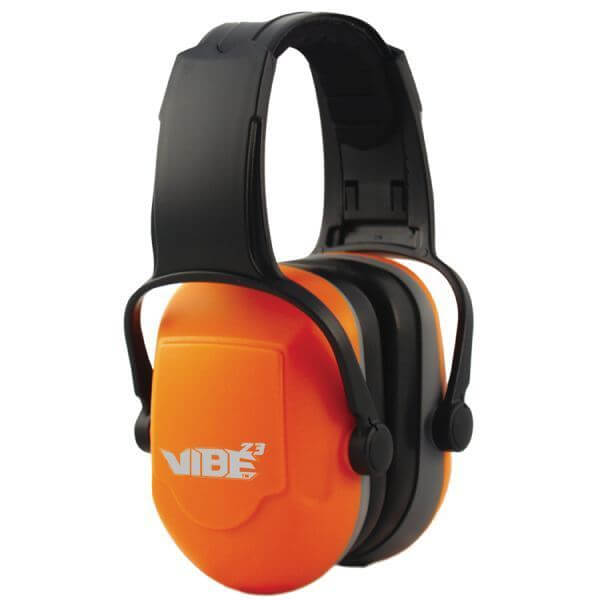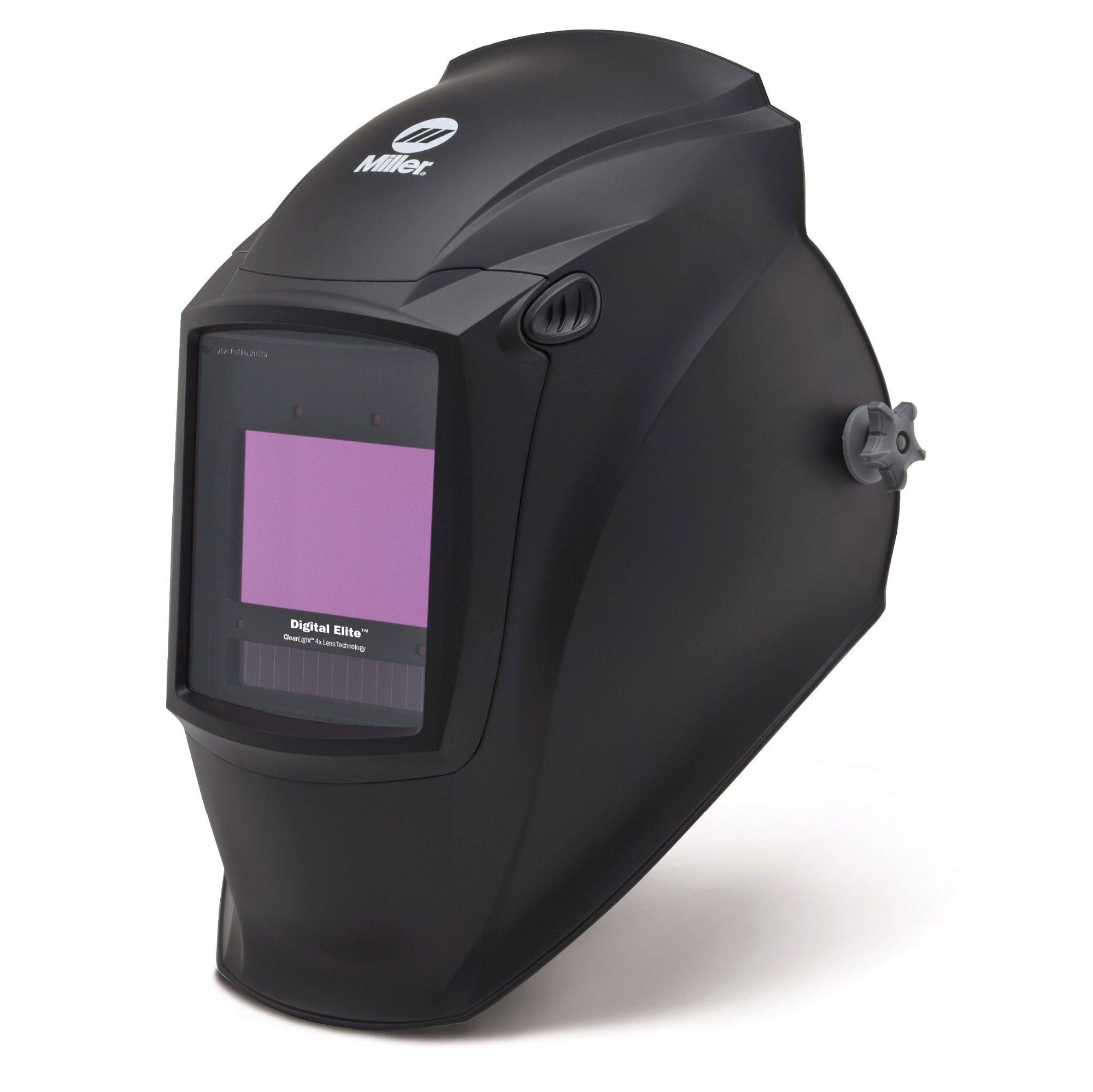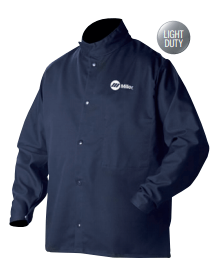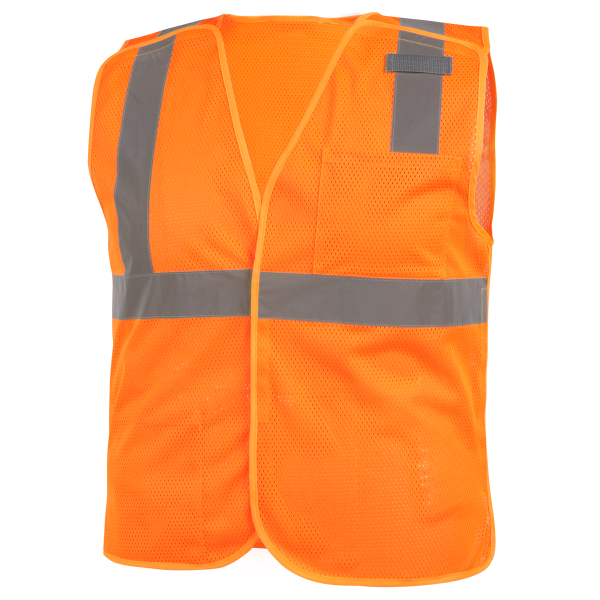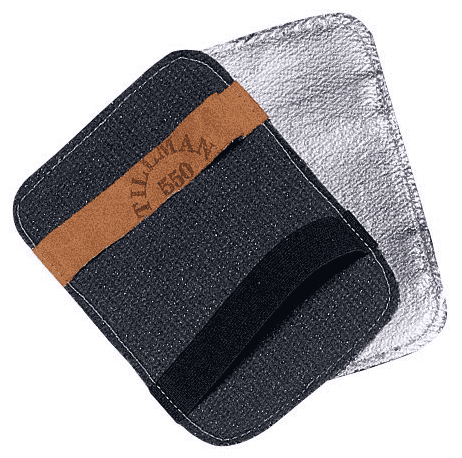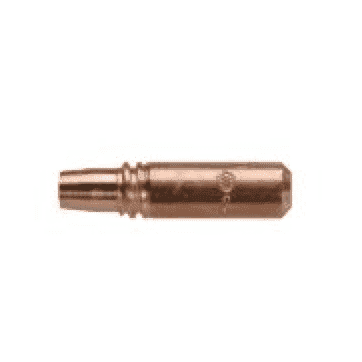123 Welding Fume Extraction Systems Starting at $895.33
Welding Fume Extractors: Essential Equipment for Indoor Welding
Welding fume extraction is a vitally important step in the welding process. Welding creates hazardous fumes which can lead to short and long term health problems if not properly vented. Welders Supply Company has a great selection of high quality Miller and Ace welding fume extractors to keep your job site safe and well vented by removing harmful gasses form worker areas.
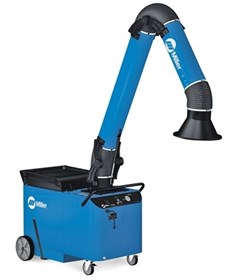 Miller Safety Equipment
Fume Extractor MWX-S #951510
7 purchased
Miller Safety Equipment
Fume Extractor MWX-S #951510
7 purchased
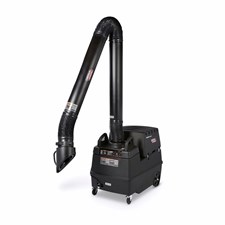 Lincoln Welding and Plasma Cutting Accessories
Prism® Mobile with Mechanized Cleaning 13 ft MERV 16 One-Pak #K4384-7
1 purchased
Lincoln Welding and Plasma Cutting Accessories
Prism® Mobile with Mechanized Cleaning 13 ft MERV 16 One-Pak #K4384-7
1 purchased
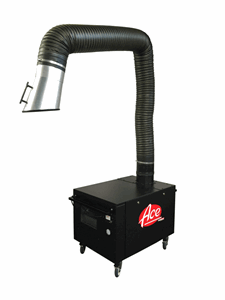 Associated Equipment Corp
Ace Mobile Fume Extractor #73-701
14 purchased
Associated Equipment Corp
Ace Mobile Fume Extractor #73-701
14 purchased
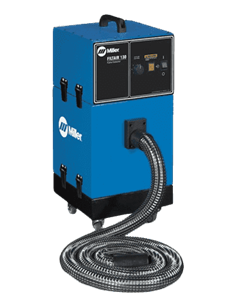 Miller Safety Equipment
FILTAIR 130 Portable Fume Extractor #300595
57 purchased
Miller Safety Equipment
FILTAIR 130 Portable Fume Extractor #300595
57 purchased
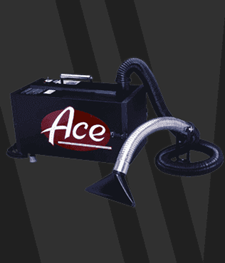 Associated Equipment Corp
Ace Welding Fume Extractor #73-201 HEPA
77 purchased
Associated Equipment Corp
Ace Welding Fume Extractor #73-201 HEPA
77 purchased
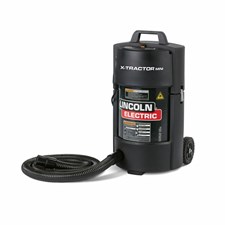 Lincoln Welding and Plasma Cutting Accessories
X-Tractor® Mini Portable Fume Extraction System (120V) #K3972-3
Lincoln Welding and Plasma Cutting Accessories
X-Tractor® Mini Portable Fume Extraction System (120V) #K3972-3
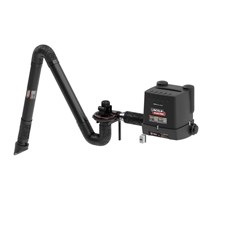 Lincoln Ready-Paks & One-Paks
Prism® Wall Mount Fume Extractor w/ Single Telescopic 13 ft. Arm, MERV 14 Filter, Arc Sensor, One Pa…
Lincoln Ready-Paks & One-Paks
Prism® Wall Mount Fume Extractor w/ Single Telescopic 13 ft. Arm, MERV 14 Filter, Arc Sensor, One Pa…
 Lincoln Ready-Paks & One-Paks
Prism® Wall Mount Dual Telescopic Arm (5-8ft) Welding Fume Extractor w/ MERV 14 Filters & Arc Sensor…
Lincoln Ready-Paks & One-Paks
Prism® Wall Mount Dual Telescopic Arm (5-8ft) Welding Fume Extractor w/ MERV 14 Filters & Arc Sensor…
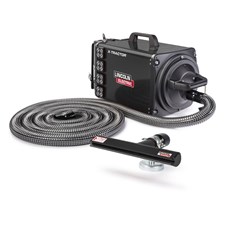 Lincoln Welding and Plasma Cutting Accessories
X-Tractor® 1GC Portable Fume Extractor w/ SHM-300 Nozzle, One-Pak® #K4260-4
Lincoln Welding and Plasma Cutting Accessories
X-Tractor® 1GC Portable Fume Extractor w/ SHM-300 Nozzle, One-Pak® #K4260-4
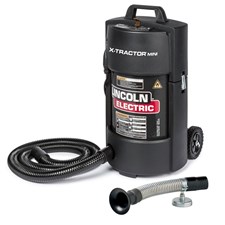 Lincoln Welding and Plasma Cutting Accessories
X-Tractor® Mini Portable Fume Extraction System w/ EN-20 Nozzle (120V) #K3972-5
2 purchased
Lincoln Welding and Plasma Cutting Accessories
X-Tractor® Mini Portable Fume Extraction System w/ EN-20 Nozzle (120V) #K3972-5
2 purchased
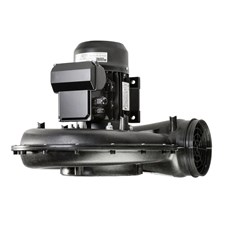 Lincoln Welding and Plasma Cutting Accessories
Prism® 2400 1 HP Fan (230V) #K2497-13
Lincoln Welding and Plasma Cutting Accessories
Prism® 2400 1 HP Fan (230V) #K2497-13
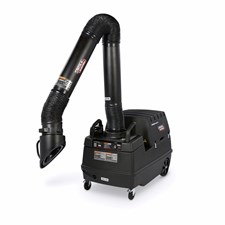 Lincoln Ready-Paks & One-Paks
Prism® Mobile Welding Fume Extractor w/ 10ft Arm, MERV 14 Filter One-Pak® Package #K4259-2
Lincoln Ready-Paks & One-Paks
Prism® Mobile Welding Fume Extractor w/ 10ft Arm, MERV 14 Filter One-Pak® Package #K4259-2
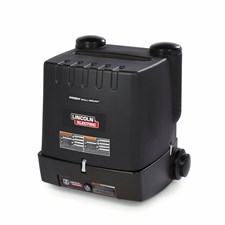 Lincoln Welding and Plasma Cutting Accessories
Prism® Wall Mount Welding Fume Extractor w/ MERV 14 Filter #K1654-4
Lincoln Welding and Plasma Cutting Accessories
Prism® Wall Mount Welding Fume Extractor w/ MERV 14 Filter #K1654-4
 Lincoln Welding and Plasma Cutting Accessories
Prism® Wall Mount Welding Fume Extractor w/ MERV 16 Filter #K1654-6
Lincoln Welding and Plasma Cutting Accessories
Prism® Wall Mount Welding Fume Extractor w/ MERV 16 Filter #K1654-6
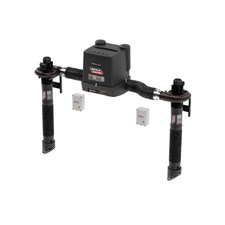 Lincoln Ready-Paks & One-Paks
Prism® Wall Mount, 4-6ft Dual Arm Welding Fume Extractor w/ MERV 14 Filters & Arc Sensor One Pak® #K…
Lincoln Ready-Paks & One-Paks
Prism® Wall Mount, 4-6ft Dual Arm Welding Fume Extractor w/ MERV 14 Filters & Arc Sensor One Pak® #K…
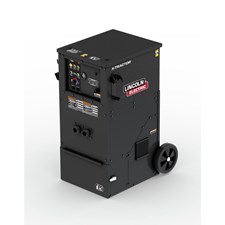 Lincoln Welding and Plasma Cutting Accessories
X-Tractor® 2 Welding Fume Extraction Gun w/ MERV 16 Nano Filter (460V 3PH) #K5271-1
Lincoln Welding and Plasma Cutting Accessories
X-Tractor® 2 Welding Fume Extraction Gun w/ MERV 16 Nano Filter (460V 3PH) #K5271-1
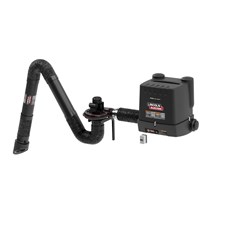 Lincoln Ready-Paks & One-Paks
Prism® Wall Mount Welding Fume Extractor w/ Flexible 10 ft. Arm, MERV 14 Filters, Starter/Overload, …
Lincoln Ready-Paks & One-Paks
Prism® Wall Mount Welding Fume Extractor w/ Flexible 10 ft. Arm, MERV 14 Filters, Starter/Overload, …
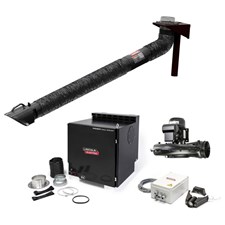 Lincoln Ready-Paks & One-Paks
Prism® Wall Mount Welding Fume Extractor One Pak®, w/ Single Telescopic 5-8 ft. Arm, Arc Sensor #K44…
Lincoln Ready-Paks & One-Paks
Prism® Wall Mount Welding Fume Extractor One Pak®, w/ Single Telescopic 5-8 ft. Arm, Arc Sensor #K44…
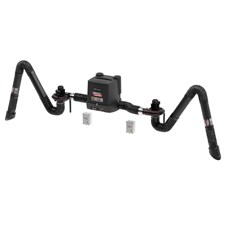 Lincoln Ready-Paks & One-Paks
Prism® Wall Mount, 13ft Dual Arm Welding Fume Extractor w/ MERV 14 Filters & Arc Sensor One Pak® #K4…
Lincoln Ready-Paks & One-Paks
Prism® Wall Mount, 13ft Dual Arm Welding Fume Extractor w/ MERV 14 Filters & Arc Sensor One Pak® #K4…
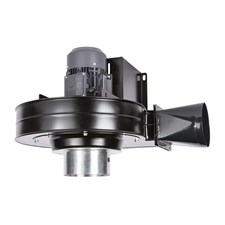 Lincoln Welding and Plasma Cutting Accessories
Prism® 4200 2HP Industrial Fan (230V) #K1656-4
Lincoln Welding and Plasma Cutting Accessories
Prism® 4200 2HP Industrial Fan (230V) #K1656-4
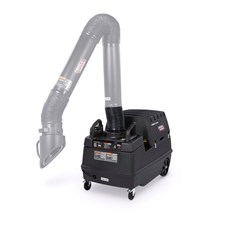 Lincoln Welding and Plasma Cutting Accessories
Prism® Mobile w/ MERV 14 Filter Welding Fume Extractor Base Unit #K1653-4
Lincoln Welding and Plasma Cutting Accessories
Prism® Mobile w/ MERV 14 Filter Welding Fume Extractor Base Unit #K1653-4
 Lincoln Welding and Plasma Cutting Accessories
X-Tractor® 2 Fume Gun 208-230/3/60 with MERV 16 Nano Filter #K5271-2
Lincoln Welding and Plasma Cutting Accessories
X-Tractor® 2 Fume Gun 208-230/3/60 with MERV 16 Nano Filter #K5271-2
About the Filters in Fume Extraction Systems
When looking at fume extraction systems, there are many factors to consider. Perhaps the most important, though, is the system’s ability to filter the hazardous particles found in welding fumes. Filters are rated on a MERV scale (short for Minimum Efficiency Reporting Value), which reflect a filter’s ability to capture larger particles (between 0.3 and 10 microns). Here’s how the MERV rating relates to its ability to capture particles:
| MERV Rating | Average Particle Size Efficiency (in microns) |
| 1 - 4 | 3.0 to 10, less than 20% efficiency |
| 6 | 3.0 to 10, 49.9% efficiency |
| 8 | 3.0 to 10, 84.9% efficiency |
| 10 | 1.0 to 3.0, 50% - 64.9% efficiency; 3.0 to 10.0, 85% or greater efficiency |
| 12 | 1.0 to 3.0, 80% to 89.9% efficiency; 3.0 to 10.0, 90% or greater efficiency |
| 14 | .3 to 1.0, 75% to 84% efficiency; 1.0 to 3.0, 90% or greater efficiency |
| 15 | 0.3 to 1.0, 85% to 94% efficiency 1.0 to 3.0, 90% or greater efficiency 3.0 to 10.0, 95% or greater efficiency |
| 16 | 0.3 to 1.0, 95% or greater efficiency 1.0 to 3.0, 95% or greater efficiency 3.0 to 10.0, 95% or greater efficiency |
NOTE: The MERV scale actually goes from 1 to 20, but filters rated higher than 16 are classified as HEPA (High Efficiency Particulate Arrestance) filters.
Miller Fume Extraction Systems
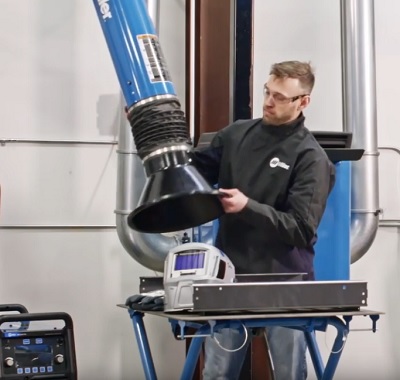 Miller’s FILTAIR ® fume extraction systems range from the compact FILTAIR ® 130 Portable Fume Extractor to the FILTAIR ® 1200 extraction system for large, industrial environments. Their stationary systems offer the flexibility of wall or column mounting, while the portable system is an all-in-one wheeled unit.
Miller’s FILTAIR ® fume extraction systems range from the compact FILTAIR ® 130 Portable Fume Extractor to the FILTAIR ® 1200 extraction system for large, industrial environments. Their stationary systems offer the flexibility of wall or column mounting, while the portable system is an all-in-one wheeled unit.
Miller’s stationary and mobile fume extraction systems incorporate an ingeniously designed single or double arm that allows the hood to be positioned around a workpiece for better extraction of fumes. The arm can be easily extended or rotated a full 360 degrees, allowing welders to position the hood wherever it’s needed. An integrated blower motor efficiently moves welding fumes from the workstation to the filter.
Miller supplies their fume extractors with their proprietary FilTek ™ XL filter, an ultra-efficient filter capable of capturing the submicron sized particles generated by welding processes. Their FilTek filters have a MERV 15 rating (among the highest in the industry), are easily cleaned, and allow for efficient air flow through the filter for strong suction power. They are made of a durable, engineered fiber that lasts up to two times as long as the treated cellulose filters in conventional filters.
Ace Fume Extraction Systems
Ace Industrial Products designs and manufactures portable, mobile, and stationary fume extractors, as well as single-station and multi-station blowers for high-volume work environments. They use high-efficiency filters (MERV 15 or HEPA rated).
Unlike the Miller fume extraction systems, most Ace fume extractors employ the progressive filtration method. This approach initially passes welding fumes through a low efficiency pre filter to capture large particles like dust and specks of rust, then passes the finer particles to a high efficiency primary filter. This approach preserves the main filter for containment of the finer, more hazardous particulates in welding fumes. Ace does, however, offer a cleanable filter, as well. These high-efficiency, reusable filters are designed to be cleaned after each use and carry an impressive MERV 16 rating.
What Every Welder Needs to Know About Welding Fumes
What are welding fumes, and why are they hazardous?
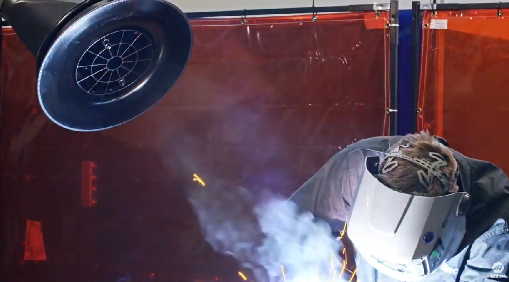 You’ve now doubt heard during training that welding fumes are unhealthy, but may not realize just how dangerous they are. Basically, welding fumes are a toxic combo of gases and particles that are released into the air during the welding process. Approximately 5% of these fumes come from the metal being welded, the other 95% come from the consumables used during the welding process.
You’ve now doubt heard during training that welding fumes are unhealthy, but may not realize just how dangerous they are. Basically, welding fumes are a toxic combo of gases and particles that are released into the air during the welding process. Approximately 5% of these fumes come from the metal being welded, the other 95% come from the consumables used during the welding process.
The particles in welding fumes are classified under two size ranges, referred to as “fractions.” Inhalable fractions are particles up to 100 µm (microns), which equates to 0.1 mm in size, and can be inhaled through the mouth and nose. Alveolar (respirable) fractions are much smaller (up to 10 µm) and most welding fume particles are smaller than 0.1 µm, which puts them in the “ultra-fine” category. The smaller the welding particles released into the air, the more harmful they are to the lungs. This is because they can infiltrate deeper into the lungs.
What happens when you inhale welding fumes?
The small particulates in welding fumes are inhaled through the nose and mouth. From there, they reach the esophagus or windpipe. From the windpipe, it’s a short trip to the bronchial tubes and lungs. Because these particles are so small, they can actually penetrate cell walls, where they then cause mutagenic changes in the body. Translation: welding fumes are a known cause of lung cancer.
Inhalable oxide particles in welding fumes:
- Aluminum oxide
- Iron oxide
- Magnesium oxide
- Lead oxide
- Fluoride
- Copper oxide
- Manganese oxide
- Chromium (III) compounds
- Nickel and cobalt oxides
Gases are a problem, too
It’s not just particles that pose a health risk, it’s the argon gas in shielding gas, gases from paint, oil or solvents on the workpiece (including hydrogen chloride and cyanide), and carbon monoxide created by the welding process. Besides damaging the respiratory tract and being a trigger for cancer, there’s also the risk of suffocation.
Gases in welding fumes:
- Nitrogen oxide
- Nitrogen dioxide
- Carbon monoxide
- Ozone
How do you know if you’ve been affected by welding fumes?
Signs of exposure to welding fumes include fatigue, shortness of breath and difficulty breathing. It’s not uncommon for welders working without fume extraction systems to develop bronchial diseases, lead poisoning (or manganese and cadmium poisoning). Welders working with galvanized metals can develop “metal fever,” a 24 to 48-hour flu-like condition that occurs several hours after heavy exposure to metal oxides.
Fume Extraction Devices Are Designed Primarily to Filter Out Particles
While hazardous gases are a serious concern, the filters in fume extraction devices are primarily designed to trap the more hazardous airborne particles. Gases in the air can usually be adequately handled with ventilation systems.
A well-designed fume extraction device can remove nearly all particulates created during welding. Not only does this prevent welders from breathing contaminated air, but it also helps to prevent these particulates from accumulating on equipment and surfaces in a shop, where it can easily become airborne by sweeping (or even movement throughout the area) and end up being breathed in by workers who aren’t even welding.
Why Buy a Fume Extractor from Welders Supply?
Our assortment of welding fume extractors is durable and robust with a long filter life and excellent airflow. Whether you need a small, portable extraction system or a large high volume ventilation system, Welders Supply Company have you covered. These easy to operate fume extractors are an important part of any welding operation. Keep your worksite and workers safe and hazard free with one of our fume extraction systems.
Whether you need a small footprint, portable extraction system for working in hard to reach places, or a large, permanently installed fume extraction system for large industrial environments, Welders Supply gives you plenty of options. You also get the best prices online and free shipping anywhere within the continental US.






